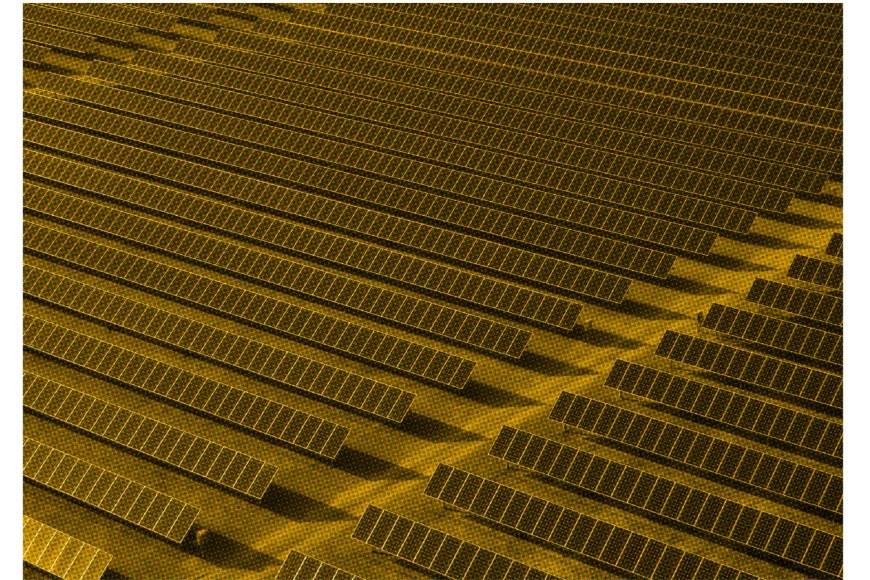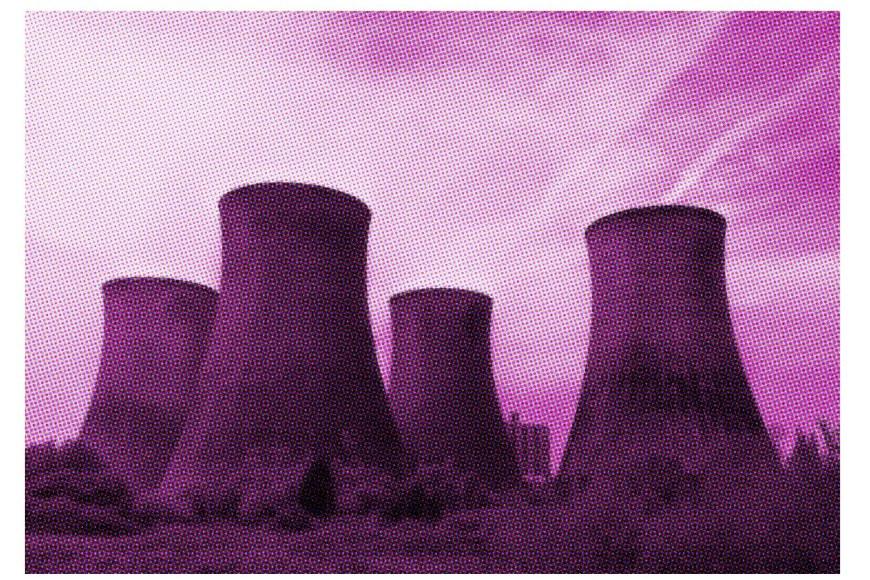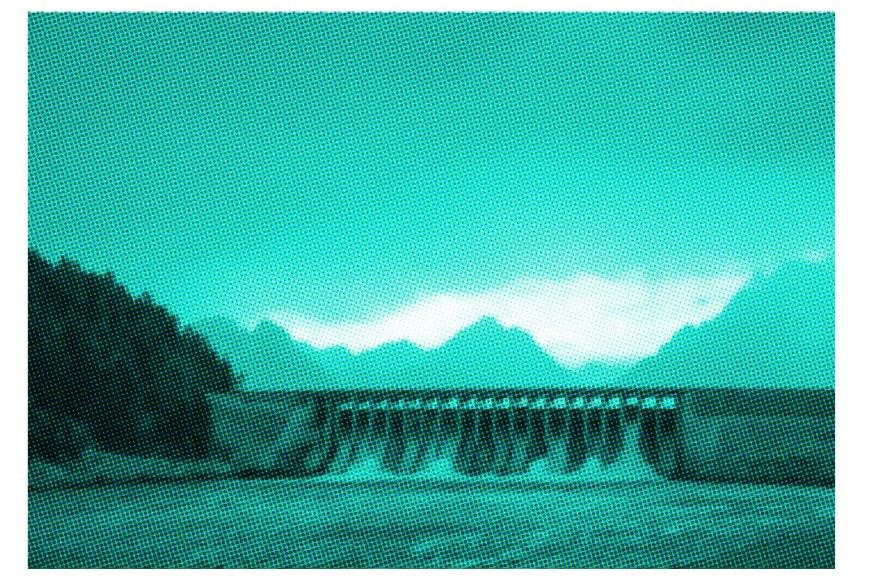Wind and solar are taking over the energy market by making electricity climate friendly

This article was originally published in Unit, the magazine of Tampere Universities.
Finland could be powered entirely by renewable solar, wind and hydro resources in the future. The first step in the process is the decarbonisation of electricity.
We must drastically reduce emissions to halt climate change. The term ‘carbon neutral’ means that we only emit as much carbon as we can remove from the atmosphere and store in reservoirs known as carbon sinks. The EU is committed to the Paris climate agreement, which set the goal to achieve global carbon neutrality by 2050.
To reach net zero, nuclear will have to remain part of the energy mix, and a much larger share of our total energy needs must be met by electricity.
“We need to phase out the fossil fuels that we currently depend on to power our industries, run our vehicles and heat our homes,” says Pami Aalto, who studies energy policy and holds the Jean Monnet chair at Tampere University.
The transition will not require a sweeping overhaul of Finland’s current energy policies, as renewable sources, with imported energy included, already account for 82% of our total electricity supply. From a purely technological standpoint, Finland is on track to meet the government’s target for net zero by 2035.
Seppo Valkealahti, professor of electrical energy engineering at Tampere University, calculates that in 15 years’ time wind could supply close to 60% and solar 25% of the national electricity needs.
“Technological advancements have made wind and solar power the most competitive forms of power generation in most parts of the world. Wind power is already commercially profitable in Finland, but solar power is still in its infancy,” Valkealahti says.
He believes we will eventually see renewables become our cheapest form of energy and displace fossil fuels.
“The transformation will happen, purely because of market mechanisms and technological advancement. Besides wind and solar, we will need hydropower to meet our energy needs,” he notes.
Weather may determine the price of electricity
In a power grid, the generation and consumption of electricity must be matched at all times. With electricity supplied mostly or entirely from renewable sources, maintaining this delicate balance will become increasingly difficult, since wind and solar power are dependent on weather.
In the future, energy companies will have to keep a close eye on weather forecasts. Electricity providers are already able to accurately predict variations in their output 24 hours in advance. Solar and wind farms being spread out across Finland also helps to balance supply and demand.
“It is virtually always windy somewhere in Finland,” Seppo Valkealahti says.
“It may also become necessary to enhance the interconnection of national grids to balance supply and demand across national borders,” Pami Aalto points out.
Energy companies are already able to predict demand on an hourly basis. Accurate forecasts are important: if an under- or oversupply of electricity is not correctly balanced, the resulting fluctuations in voltage and frequency may damage sensitive electronics connected to the grid.
The electricity system must thus be radically changed to effectively match supply and demand. The most important grid balancing technique is reserve power, which allows the grid operator to compensate for the intermittent nature of renewables that depend on the wind blowing or the sun shining.
So far, reserve power is abundantly available in Finland in the form of hydropower and imported electricity.
Regulating the output of nuclear power plants is difficult, as they churn out steady, around-the-clock electricity all year round. This inflexibility is incompatible with an electricity system comprised of variable renewables.
“Using nuclear power as a backup power source would mean compromising the efficiency of the plant and wasting some of the energy released in the fission process,” Valkealahti says.
Hydropower, now accounting for less than 20% of Finland’s total electricity production, is therefore expected to remain our most important form of reserve energy. Bioenergy could in principle be used for the same purpose, but it is currently used to generate baseload power – the minimum amount of energy needed to be supplied to the national grid at any given time.
“Finland has untapped potential for hydropower, but plans to build new facilities have been abandoned,” Valkealahti notes.
Hydropower is a clean fuel source, but tampering with the flow of rivers can disrupt aquatic ecosystems.
To maintain Finland’s balancing capacity, it seems likely that electricity will have to be imported from the other Nordic countries, mainly from Sweden and Norway. They already get 90% of their electricity from zero-carbon sources.
Wind power is commercially profitable in Finland, but solar power is still in its infancy.

Building new nuclear plants is not commercially viable
Nuclear power currently remains the largest single source of electrical energy in Finland. As we need to eliminate fossil fuels as soon as possible and are only now gearing up for the large-scale rollout of renewables, nuclear will have an important role in our transition to zero carbon. Still, both Aalto and Valkealahti forecast a bleak future for nuclear energy.
“The construction of new nuclear power plants has not been profitable for years. Nuclear power requires a large initial investment but is relatively cheap to run, so we should keep the current nuclear fleet operating for as long as possible,” Valkealahti says.
With nuclear costs rising and renewable costs dropping, it no longer makes sense to build new nuclear plants.
“With contractors and financiers in short supply, I doubt we will see any new nuclear plants built in Finland,” Aalto says.
Nevertheless, nuclear power is likely to remain part of our energy mix long into the future.
“Renewables make up such a small slice of the energy pie that we need nuclear as a low-carbon source of energy while we shift away from fossil fuels,” argues Aki Korpela, principal lecturer in electrical engineering at Tampere University of Applied Sciences (TAMK).
Citizens become involved in regulating energy consumption
For ordinary citizens, the changing energy landscape could mean that they start communicating with their household appliances, which will ask their owners how and when they should run. Consumers will take part in balancing supply and demand as they will be encouraged to consume electricity during off-peak hours when, for example, industry demand is low.
Smart home systems know when electricity rates are lowest.
“Consumers will also pay a premium for higher wattage. We may end up paying more for watts than kilowatt hours, meaning that it will cost more to quickly draw power from the grid,” Aki Korpela says.
Years from now, we may have electric sauna heaters that tell us exactly how much we can save if we allow the sauna to take an hour to warm up as opposed to 30 minutes.
Another change that will affect consumers is that households will become producers and managers of energy. Rooftop solar panels will power our homes, so much so that they will be able to stay off grid in the longer days of the summer season. Any excess solar electricity will be stored in a battery to use overnight.
Our demand for electricity will continue to climb, because our homes will be heated with geothermal and air-source heat pumps that run on electricity. We will also need electricity to charge our cars.
Although energy can be stored in the battery of an electric car during oversupply and off-peak periods, the fast charging of electric cars will still cause huge spikes in demand.
Aki Korpela highlights a project underway at Tampere University of Applied Sciences that is testing the effective charging of electric cars.
“When five Teslas pull into a charging station, the power drawn from the grid can be supplemented with back-up power reserves that are recharged during off-peak periods,” he notes.
Tesla’s vehicles are equipped with a 100-kWh battery. Fully charging a Tesla in one hour takes 100 kW of charging power, whereas slow overnight charging significantly reduces the strain placed on the grid.
For purposes of comparison, keeping a 10-kW electric sauna heater on at full capacity for one hour will use up 10 kWh of electricity. If the power is lowered to 5 kW, it will take two hours for the sauna to heat up, but the amount of electricity consumed will remain the same.
Some power companies have already introduced premiums based on peak power.
Building new nuclear plants has not been commercially viable for years.

Wind power to dominate Finland’s energy mix
Wind power supplied 7% of Finland’s overall electricity in 2019, but the share is growing at an unprecedented rate. The new generation of wind turbines are bigger and taller, and consequently much more efficient as they capture the stronger and steadier winds higher up in the atmosphere. The new turbines are also capable of extracting more kinetic energy from weaker winds.
The days when the wind industry needed government subsidies to be commercially viable in Finland will soon be over. Of all the wind farm projects now underway in the country, well over 50% will be built wholly without government backing.
Both Seppo Valkealahti and Pami Aalto are confident that wind will provide the bulk of Finland’s energy in the future.
“The large-scale deployment of renewables is the only option if we are looking to significantly increase Finland’s electricity supply. Of all the alternatives available, wind is the easiest and fastest,” Aalto points out.
Valkealahti has calculated the overall capacity of wind power projects that are currently in the construction or planning stages in Finland.
“The wind farms under construction will have a total capacity of 1.64 GW once they are completed in the next two to three years. They alone will almost double our existing capacity,” he says.
In addition, 16.5 GW of new wind projects are in the works. With all these projects in the pipeline, we can expect a tenfold increase in Finland’s wind power capacity.
Wind turbines produce no carbon emissions, but they are not without controversy. Dozens of wind farms and hundreds of turbines are needed to generate large amounts of electricity. Wind farms cannot be camouflaged, and opponents claim they are unsightly and ruin the landscape. Noise is often raised as a complaint, too.
Building solar power plants is cheap
Finland is lagging behind in the deployment of solar energy, which in late 2019 provided only a minuscule 0.2% of our total energy demand.
The construction of wind farms requires massive investments at the outset, whereas solar energy is already a viable option for many consumers. Many energy companies are offering consumers solar panels that generate a decent portion of their annual electricity consumption.
Pami Aalto envisions a future where residential and public buildings are covered with solar panels to harness energy.
“The panels could be supplemented with solar collector systems for combined domestic water and space heating in the long days of summer,” Aalto says.
Norway and Sweden are already generating 90% of their electricity from zero-carbon sources.
Solar power is the cheapest form of electricity in many parts of the world, but in Finland the output drops during the dark northern winters. Still, Seppo Valkealahti is confident solar will become an important source of energy in Finland, because large-scale solar plants produce the world’s cheapest electricity.
“Since large-scale solar projects are more economical than small ones, massive solar plants with a capacity of hundreds of megawatts are now cropping up around the world. The efficiency of solar cells and solar panels has dramatically improved over time while prices have been steadily falling 10% per year,” Valkealahti says.
In the past two decades, the volume of solar capacity worldwide has seen an average annual increase of 40%. Given this growth rate, Valkealahti estimates that Finland’s total solar power generation could reach close to 20 terawatt hours in 2035, covering 25% of our overall demand.
“In Germany, where electricity is expensive unlike in Finland, solar power is already the cheapest source of electricity generation. As Finland enjoys long and light summer days, we receive the same amount of solar radiation annually as Germany, where the weather is typically cloudier,” he notes.
What also affects the price tag of solar power in Germany is the fact that the German government initially offered subsidies for new solar projects, whereas Finland chose to invest in wind power and its feed-in tariffs.

Companies as drivers of change
The electrification of the transport system represents an important element of the new energy landscape. Transport currently accounts for 20% of Finland’s total emissions. This could be reduced through the widespread adoption of electric cars, but progress in introducing government support for the uptake of electric cars has been slow.
“We need to fast-track the switch to electric cars, and vehicle-to-grid technology that enables two-way power flow should become the new normal by 2030,” Pami Aalto says.
Aalto points out that the transformation of the transport sector cannot happen without coordinated EU-wide action. For example, building a convenient and ubiquitous charging infrastructure depends on the number of electric cars on the road.
“Traffic is definitely what Finland should focus on next in the race to go carbon neutral, but the next step for most countries in Europe is a shift to low-carbon energy,” he argues.
The speed of the transition largely depends on public policy. In 2019, cogeneration plants provided 26% of Finland’s electricity. They burn mainly woody biomass but also fossil fuels – such as natural gas, coal and peat – to generate both electricity and heat.
As we must urgently quit fossil fuels, at least industrial and municipal cogeneration plants must be upgraded to meet current and future standards.
One important question concerns the environmental impact of biomass. It is now classified as carbon neutral, but last year an international team of researchers challenged the inclusion of forest biomass in the EU’s renewable energy directive. They argue that the use of wood-based biomass for energy purposes accelerates deforestation and exacerbates climate change as wood, when burned, emits more carbon than coal per unit of energy. In addition, the equipment for harvesting biomass runs on fossil fuels.
If we look far enough into the future, we will see cogeneration plants virtually disappear according to Pami Aalto. As small-scale local energy providers, they may be replaced, for example, with large-scale wind farms in which municipalities could buy shares.
“Public buildings and warehouses could be covered with solar panels,” he says.
Besides political decisions and incentives, we need companies to create new types of services and unlock opportunities across the changing energy value chain. For example, companies could offer equipment that monitors our electricity usage and helps us save money on our energy bills.
Aggregators could purchase electricity from multiple small-scale producers and sell it to the grid.
“It is important to get consumers on the bandwagon, and companies may be better at making this happen than policy-makers. As no one can greenlight the construction of 15 new wind farms, we need to make small changes here and there to support the transition to a low-carbon future,” Aalto argues.
The EL-TRAN consortium is looking into the deployment of a resource-efficient electricity system. The members include Tampere University, Tampere University of Applied Sciences, the University of Eastern Finland, VTT Technical Research Centre of Finland and the University of Turku’s Finland Futures Research Centre.
Author: Sanna Sevänen







